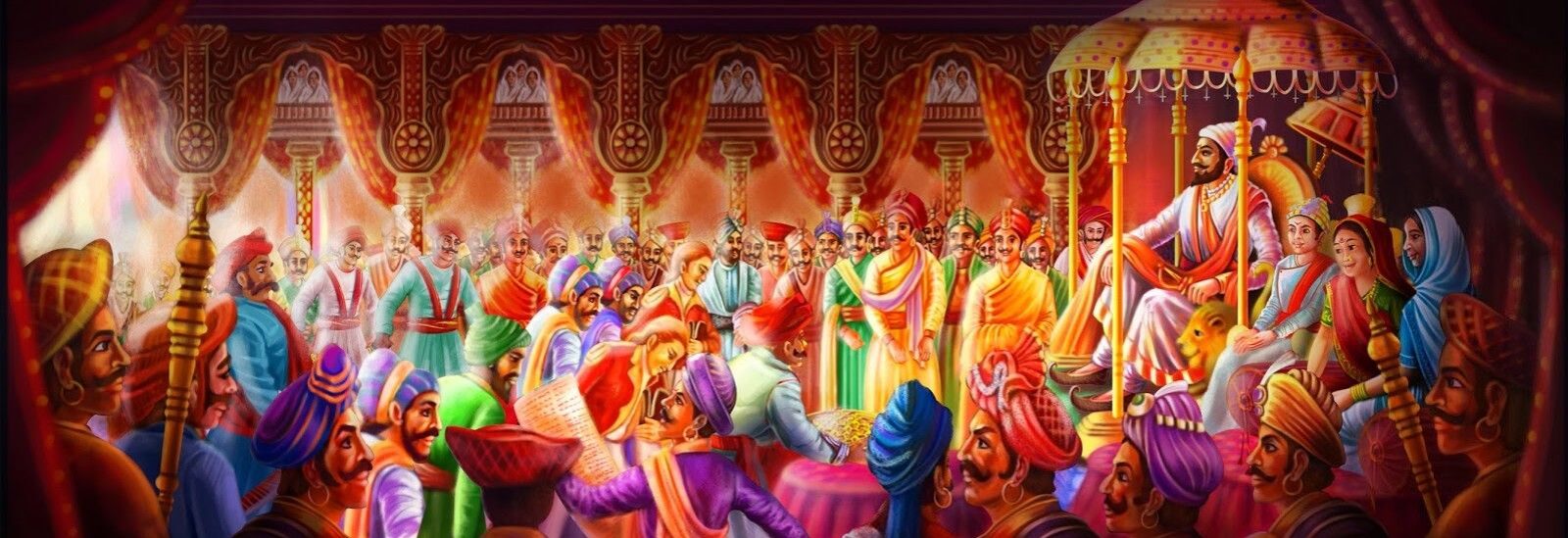Continue reading from Part IX
Samadhi (समाधी):
Canopies erected on forts, at the base of forts, in villages to commemorate knights and royals.
Veergal (वीरगळ):
Veergal means a pillar erected in memory of a hero, knights. A stone carved on a stone slab based on specific sculptures in memory of a soldier who died in war, in a battle is known as Veergal. Veergals are of different sizes, telling different information were carved based on the valor of the hero, the description of the battle.
We can call ‘Veergale’ as ‘Memorial of Martyr Heroes’. The word Veergal became popularized as Veerkallu followed by Veerkal and finally Veergal. In South, Kallu means stone and Veerakallu means stone of hero. In English Veergales is called as ‘Hero Stone’. It originates from the state of Karnataka. Their history is understood because of the inscriptions in Veeragal in Karnataka. But the inscription does not appear in Virgal in Maharashtra. So we don’t understand which Veergal belongs to whom and when.
Veergal should be read from bottom to top. The battle scene in which Veera was martyred is engraved in the bottom frame. In the frame above it, the hero’s ascension to Kailash is shown. In the frame above it, Veer is shown worshiping Shivlinga and various sculptures are carved on Veergala’s head. In the context of Kailasarohan, the more Apsaras accompanied the hero to Kailasa or the hero was shown in a palanquin, the greater the hero or the greater the status of that hero. Veer is always in the middle. Also, we can know how big the hero was or how big his position was from the following aspects. That is, Veer is seen worshiping Shivlinga in the frame above it or sometimes the Shivlinga is on Nandi and sometimes Veer is seen directly worshiping Shiva. The greater the hero or his rank, the greater his honor in the heroic ranks. Shivgana is also shown along with Veera while worshiping Shivlinga. Veera is always shown on the left side and Shivagana on the right side. Also, the bigger the hero, the bigger his heroism. Shubalakshmi symbols are engraved on the top of Veeragala of the big hero. When a woman is also shown worshiping the Shivling along with Veera, she is his wife. It means that the hero’s wife must have became a Sati (सती). If Veer is shown to be a Kailasan then he belongs to the Kshatriya clan and if he is shown to be a Vaikuntha resident then he belongs to the Brahmin clan. An urn (कलश) is carved on the top of Veergala. Another sign in Veergal that stating Veera’s wife has passed away is the hand with a kalasha. Also at some places we find Satishila to indicate that Veera’s wife has passed away. (Information about Satisila is given later.) If the Kalash is accompanied by birds, it is called the Kalash-vahak and if it is accompanied by animals, it is called the Kalash-sanrakshak. Kalash is a symbol of ascension. This means that Veera attained heaven. If there is Chandra Surya with Kalash, then the fame of that hero will remain till Chandra Surya. Sometimes flowers, deities and other sculptures are carved with the kalash. Each of those sculptures had different recognitions at that time. Like lotus flower is a symbol of prosperity. Kirtimukh is a symbol of defeating sin. If Kirtimukh is with Kalash, then the hero will be freed from sin and go to Kailash. Peacock sculpture is a symbol of beauty. Sculptures of gods and goddesses are symbols of Kul-daivat or desirable deities.

Continue reading with Part XI
or goto Part I, Part II, Part III, Part IV, Part V, Part VI, Part VII, Part VIII


Pingback: Elements of Fort (Part XI) – Chatrappati Blogging
Pingback: Elements of Fort (Part IX) – Chatrappati Blogging
Pingback: Elements of Fort (Part III) – Chatrappati Blogging
Pingback: Elements of Fort (Part IV) – Chatrappati Blogging
Pingback: Elements of Fort (Part V) – Chatrappati Blogging
Pingback: Elements of Fort (Part VII) – Chatrappati Blogging